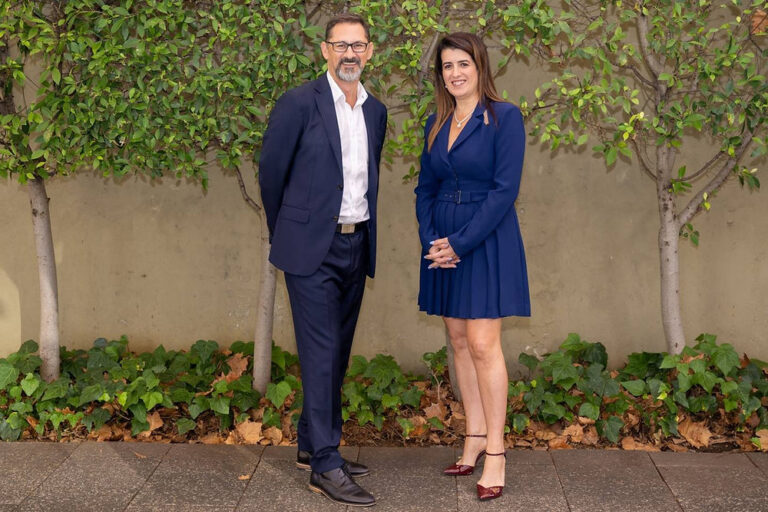Respect for women in the male-dominated property sector is not necessarily automatic but it can be earned, according to some of the State’s most powerful operators.
Some have previously had to fight for recognition, and some of the powerbrokers still face assumptions they are personal assistants to a male boss.
But the challenges, including being part of the minority 25 per cent female workforce, have not stopped them from filling some of the State’s key roles in development, planning, infrastructure, sales and design.
At the top is Planning Minister Rita Saffioti — arguably the most powerful person in the sector — who has given the planning system its biggest ever shake-up. Ms Saffioti said gender had never been an issue for her personally, but historically, women in WA property had faced some bias.
“In some instances men get automatic respect … but as a woman you have to prove yourself a bit more,” she said
She believed the gender imbalance was being eroded by the increasing uptake of STEM subjects undertaken by female students and the further rollout of family-friendly hours across the industry.
Tanya Trevisan, who heads the WA arm of development at multinational Frasers Property, said negativity was the exception rather than the rule.
But the exceptions were harsh, including the time she was told — as chief executive of a major company — to make coffee for a group meeting. There were also assumptions that her architecture expertise was in soft furnishings.
In reality she has developed 2400 apartments over 30 years, and currently leads the $500 million Port Coogee development
“I agree with the minister — I’ve had to earn it,” she said. “It’s been a long road and a hard slog at at times but it’s also been incredibly rewarding.”
She called on female leaders to take on a bigger public profile and to encourage other women into the sector and its top jobs.
Megan Adair, the director of planning at the country’s biggest private residential developer, Satterley Property, has often been the only woman in the room, claiming there was still “to a degree, a bit of bias towards males”.
In one telling example, which felt like “not that long ago”, she was told she would not be paid as much as her male predecessor when hired for a senior position.
“I was told my salary would be reviewed after 12 months, so they could see how I was managing,” she said. “It made no difference to them that I was actually more experienced than the guy I was replacing.”
However, Ms Adair’s performance was so outstanding, she got a substantial pay rise a year later, which took her salary above that of her predecessor.
State Government Architect Rebecca Moore said there had been significant improvement since her graduate job in London, in 1990, where she earned half the amount of an unqualified male counterpart.
Testimony to the improvement, she last year became WA’s first female State Government Architect.
But the “unconscious bias” in the sector remained, with design and proponent teams presenting projects to the Design Review Panel usually comprising five to 10 men.
To counter this, she instructs them to include a female colleague at the presentation, including from the junior ranks, to ensure professional development.
“If you are not aware of a conversation that occurs at a higher level, how will you ever aspire to be part of that team or to ask for that opportunity?” she said.
Julie Drago said she never came across a female sales agent on her $200 million buying spree for her family’s Hero Properties industrial portfolio.
Now running her own real estate investment trust through her company Ovest, she has just raised $60 million, and has just opened another similar-sized REIT. Her goal is to raise $1 billion in five years.
The chief executive said her gender was ultimately a blessing because women were able to think outside the business sector’s zero-sum mentality to come up with solutions for mutual gain.
For 33-year-old Laura Ainsworth, the development manager at Far East Consortium, occasional gender bias is compounded by her youth. It had on occasion led others to mistake her for a personal assistant.
Despite the initial perception, others quickly came around to her obvious capability, which has taken her to the top of her field and to guest lecturing roles at university. This year alone she has led development on projects worth $750 million.
Colliers sales agent Tory Packer, who has this year sold $100 million worth of property, said mentoring was a key to boosting female participation. At age 30, she is already working with industry groups to nurture up-and-coming talent.
Paige Walker, in charge of Mirvac’s $700 million housing portfolio, said gender equity was ensured at her workplace by managing director Susan Lloyd-Hurwitz. She called on other companies to emulate Mirvac’s policy to ensure no gender pay gap on like-for-like jobs, a 50 per cent female shortlist for senior roles, and mentoring programs.
Karen Wright, regional director of national consultancy Urbis, said flexible, part-time work and family-friendly hours was key to helping women pursue their careers once they had families.
Nicole Lockwood, the chair of infrastructure WA, said she had only had positive experiences and believes she had been the beneficiary of affirmative action.




